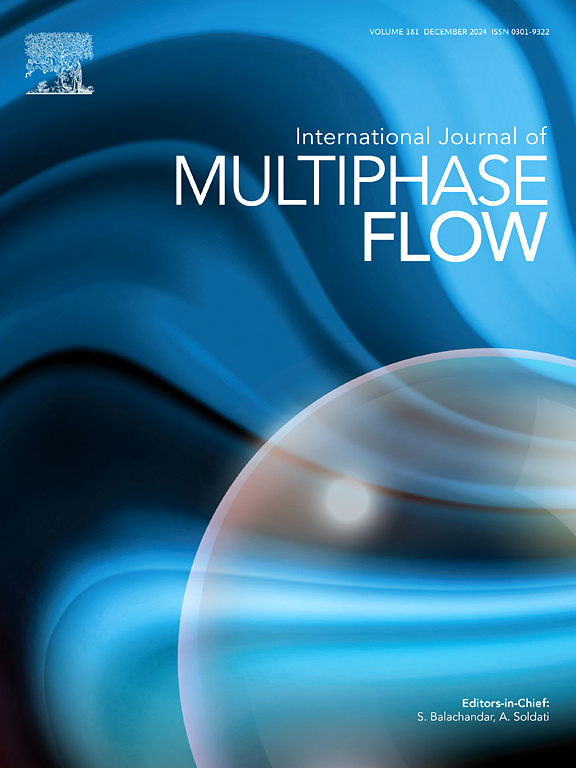A numerical study of stretch and breakup of a ferroliquid bridge under non-uniform magnetic field
IF 3.6
2区 工程技术
Q1 MECHANICS
International Journal of Multiphase Flow
Pub Date : 2024-12-12
DOI:10.1016/j.ijmultiphaseflow.2024.105105
引用次数: 0
Abstract
The formation of liquid bridges between solid surfaces plays a crucial role in various applications, where precise control over their stretching and breaking is essential. Previous studies have concentrated on non-magnetic fluids. However, ferroliquids, which are magnetic fluids that become magnetized in the presence of magnetic fields, offer a unique opportunity to control liquid bridge dynamics. This study investigates the stretch and breakup dynamics of liquid bridges in ferrofluids under the influence of a non-uniform magnetic field. The simulations employ a simplified multiphase lattice Boltzmann method (SMLBM) coupled with a self-correction solution for magnetic fields to explore the effects of key parameters, including magnetic field strength, surface wettability, and ferrofluid volume, on bridge behavior. The framework of SMLBM provides computational efficiency and facilitates easy incorporation of magnetic forces for accurately modeling ferrofluid. It is shown that the magnetic field can effectively control the stretching and breakup of liquid bridges, which also depends on the boundary wettability and the liquid volume. Critical thresholds for stable bridge formation and breakup are identified, establishing the criteria for bridge stability for a specific set of parameters. This study enhances our understanding of magnetically controlled liquid bridges, laying foundation for future research and applications in advanced materials and microscale technologies.
求助全文
约1分钟内获得全文
求助全文
来源期刊
CiteScore
7.30
自引率
10.50%
发文量
244
审稿时长
4 months
期刊介绍:
The International Journal of Multiphase Flow publishes analytical, numerical and experimental articles of lasting interest. The scope of the journal includes all aspects of mass, momentum and energy exchange phenomena among different phases such as occur in disperse flows, gas–liquid and liquid–liquid flows, flows in porous media, boiling, granular flows and others.
The journal publishes full papers, brief communications and conference announcements.

 求助内容:
求助内容: 应助结果提醒方式:
应助结果提醒方式:


